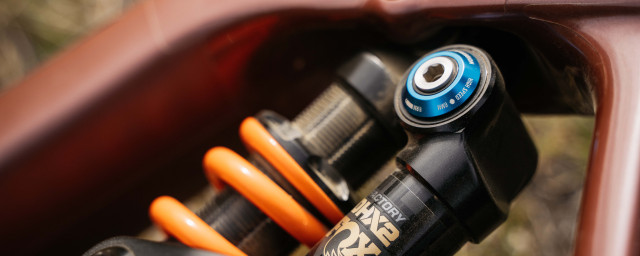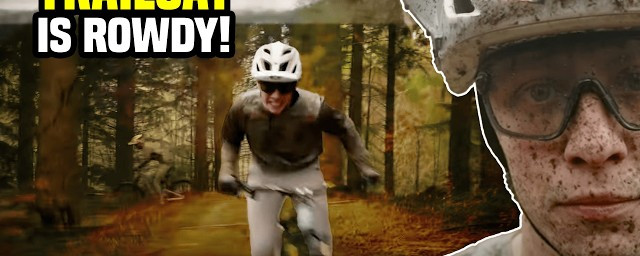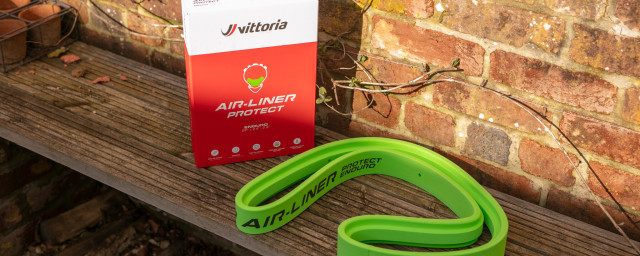Mountain bike icons – the Bart Brentjens story

[Words by by Steve Thomas]
The tall and gangly figure of Bart Brentjens in full flight had a threatening stance, especially if you were a race-track rival. More often than not, he delivered on that threat with resounding force – and none more so than when he took the first-ever men’s cross-country mountain bike Olympic title in Atlanta back in 1996. That was a result that would firmly cast the legend of “Bartman” into pure mountain biking gold.
- Mountain bike Icons - the greatest riders of all time
- Cross-country mountain bikes: understanding their design and geometry
- Types of mountain bikes: every MTB category explained
Born and raised in the rolling countryside of Limburg in the southern Netherlands, Bart has now moved slightly north. He resides in a farmhouse in North Brabant and, unlike many stars of the sport, he’s kept his feet firmly planted on home turf throughout his career- all be it wet and windswept turf.
Did the sun-baked high life of the beautiful south chosen by modern-day stars (who also earn far more money than he did) never lure him away?
“I thought about it many times; maybe even moving to Switzerland, or perhaps buying a second house somewhere. But I’m someone who needs to have a home, and this feels like a real home to me. We have a dog, chicken and geese, a horse, and cats around, and I already knew when I was racing that I could refill my tanks the best at home, and I think there’s only one home.”
“I’ve done many training camps in South Africa, Cyprus, the south of Spain, the Canary Islands, Majorca, all over the world, and many times thought about buying a house there, but never did.
Even in the Netherlands, it rains a lot, but it doesn’t rain all day. Of course, we needed to do a lot of training and riding before the season, and we did a lot of training camps, but you were already travelling a lot during the season, and you needed time at home – and that’s in the winter.”
In the beginning
Cycling is extremely deep-rooted in Dutch culture, with many families having long historical backlogs in the sport – and yet Bart did not come from such a family, and yet ironically, he still somehow discovered cycling through family - when his nephew, Frans Maassen, took up the sport aged 15.
Bart was a couple of years younger than him and followed his lead. Frans went on to become a top road pro and is now a team manager with the Jumbo-Wisma team, meanwhile, Bart took a path then far less known into pro cycling.
Getting a taste for dirt
With long-standing cycling traditions, it was curly bars that ruled the racing roost back then, although Bart soon found that it was when the going got rough that he shone brightest.
“I was much stronger in cyclo-cross than on the road, and Frans was much better than me on the road; but off-road you needed more skills and, in the Netherlands, when off-road there is a lot of short ups and downs, plus the position on the bike – where you are straighter and upright offroad, it all suited me much better than the aerodynamic position on the road.”
After studying horticulture Bart pulled boots of a different kind as he undertook the then-obligatory national service, and during the winter of 1992, he got his first taste of mountain biking when he took to flat bars for some cyclo-cross races (a separate MTB category on the same courses).
As a talented cyclo-cross racer, military service was kind to him and allowed him time to train and transition more seriously into the fat tyred side of the sport. In 1993 he managed a couple of top ten finishes in World Cup races, this in turn scored him a professional contract for the following year – a year in which he won the Words Cup overall.
The highlights
In 1995, Bart followed up his 1994 World Cup series title by earning the rainbow stripes of World Champion, and a year later he fulfilled his ambitions and became the Olympic Mountain bike Champion – surely the highlight of any athlete’s career, or indeed their life?
“In a career of maybe 10-12 years you can have perhaps three chances at the Olympics, and maybe 1-2 times you are in the best shape of your life and, yet still, you also have to compete with a few more who are also in the best shape of their lives. It’s absolutely not an easy thing to win it, and so I have even more respect for Nino Shurter (10 times World Champion) and Julian Absalon who was twice Olympic Champion.”
And yet, it’s not always the gold that glitters the brightest. “Personally, I was also very proud of my Olympic bronze medal in Athens, 2004 – because I did the whole thing on my own. I didn’t have a trainer, and so I studied a lot about training and, at 36 I had already learned a lot – and so I was very proud of that moment compared to my gold medal.”
“Of course, the gold means much more to the rest of the world, but personally I had a couple of performances with a similar feeling that weren’t gold medals; like in Athens, and also winning the Cape Epic in 2005 (the second edition) with Roel Paulissen as a partner – that gave me a happy feeling. Naturally, it wasn’t the same as becoming World Champion, but to be able to deliver a performance like that, these things I still remember.”
The lows
“I had a couple of injuries which I didn’t take enough care of and deal with them in the right way – I didn’t spend enough time healing big injuries, and I kept going way too early, and you have to pay for that.”
The end of the gold rush
From the outside, it may seem as though Bart never really left the racetrack behind – which is true, but he did have to face the harsh wrath of Father Time and make some decisions as time took its unforgiving toll.
“It was 2008, and my fourth Olympics, and I turned 40 at the end of that year. The Olympics had always been my main goal during my career, and I also felt that with the younger generation, it was too hard to reach that level again every year, and so it was time to say goodbye to the elite category.”
“But I still felt that there was a lot of riding my bike left in me, and doing races like Cape Epic and doing marathons, it still gave me a good feeling doing them – even when I didn’t win them all anymore.”
The afterlife
These days Bart still runs a busy life, with managing and riding (on occasion) for his own Brentjens Mountain bike Racing Team, co-owning, and running the American Eagle bike brand and, of course, previously commentating alongside Rob Warner on the Red Bull TV coverage of the World Cups.
When he hung his elite racing shoes did he have plans for the future?
“No, not really. I had the feeling that I was never 100% satisfied with my team managers in the past, and I’d been in a couple of teams (American Eagle, Specialized, Giant Global, T-Mobile etc) and I never felt fully satisfied with how they organised a team, and I always felt I could do things better myself. That was one of the reasons that I started a team – and also to give some legacy to the riders following the same dreams I had.”
Still shaking it
How much riding does he still do?
“Around six hours a week. It’s not that much, but I still have a few goals, like riding the Cape Epic each year, and I have my own Bart Brentjens Challenge race in the Netherlands, and I do that every year, plus I will ride a few other stage races – and they might give me the pressure to ride some more. I feel much better when I ride once in a while, rather than doing nothing.”
“I also test a lot of products; like tyres, e-bikes, the Garmin and other things – trying to improve them for the next year, and you can only do that if you ride regularly enough (to push it).”
Does he still get the same joy out riding?
“Yes, I do, and riding trails – off-road mountain biking, that’s my favourite. My road bike, I haven’t ridden for a few years.”











